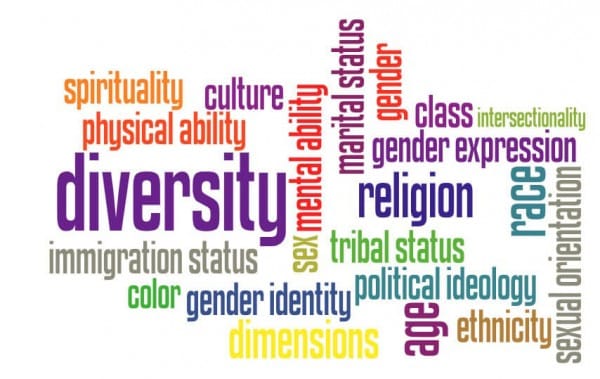42 Adolescent Development By Jennifer Lansford
Original chapter by Jennifer Lansford adapted by the Queen’s University Psychology Department
This Open Access chapter was originally written for the NOBA project. Information on the NOBA project can be found below.
We encourage students to use the “Three-Step Method” for support in their learning. Please find our version of the Three-Step Method, created in collaboration with Queen’s Student Academic Success Services, at the following link: https://sass.queensu.ca/psyc100/
Adolescence is a period that begins with puberty and ends with the transition to adulthood (approximately ages 10–20). Physical changes associated with puberty are triggered by hormones. Cognitive changes include improvements in complex and abstract thought, as well as development that happens at different rates in distinct parts of the brain and increases adolescents’ propensity for risky behavior because increases in sensation-seeking and reward motivation precede increases in cognitive control. Adolescents’ relationships with parents go through a period of redefinition in which adolescents become more autonomous, and aspects of parenting, such as distal monitoring and psychological control, become more salient. Peer relationships are important sources of support and companionship during adolescence yet can also promote problem behaviors. Same-sex peer groups evolve into mixed-sex peer groups, and adolescents’ romantic relationships tend to emerge from these groups. Identity formation occurs as adolescents explore and commit to different roles and ideological positions. Nationality, gender, ethnicity, socioeconomic status, religious background, sexual orientation, and genetic factors shape how adolescents behave and how others respond to them, and are sources of diversity in adolescence
Learning Objectives
- Describe major features of physical, cognitive, and social development during adolescence.
- Understand why adolescence is a period of heightened risk taking.
- Be able to explain sources of diversity in adolescent development.
Adolescence Defined
Adolescence is often characterized as a period of transformation, primarily, in terms of physical, cognitive, and social-relational change.

[Image: CC0 Public Domain, https://goo.gl/m25gce]
Adolescence is a developmental stage that has been defined as starting with puberty and ending with the transition to adulthood (approximately ages 10–20). Adolescence has evolved historically, with evidence indicating that this stage is lengthening as individuals start puberty earlier and transition to adulthood later than in the past. Puberty today begins, on average, at age 10–11 years for girls and 11–12 years for boys. This average age of onset has decreased gradually over time since the 19th century by 3–4 months per decade, which has been attributed to a range of factors including better nutrition, obesity, increased father absence, and other environmental factors (Steinberg, 2013). Completion of formal education, financial independence from parents, marriage, and parenthood have all been markers of the end of adolescence and beginning of adulthood, and all of these transitions happen, on average, later now than in the past. In fact, the prolonging of adolescence has prompted the introduction of a new developmental period called emerging adulthood that captures these developmental changes out of adolescence and into adulthood, occurring from approximately ages 18 to 29 (Arnett, 2000). This module will outline changes that occur during adolescence in three domains: physical, cognitive, and social. Within the social domain, changes in relationships with parents, peers, and romantic partners will be considered. Next, the module turns to adolescents’ psychological and behavioral adjustment, including identity formation, aggression and antisocial behavior, anxiety and depression, and academic achievement. Finally, the module summarizes sources of diversity in adolescents’ experiences and development.
Physical Changes
Physical changes of puberty mark the onset of adolescence (Lerner & Steinberg, 2009). For both boys and girls, these changes include a growth spurt in height, growth of pubic and underarm hair, and skin changes (e.g., pimples). Boys also experience growth in facial hair and a deepening of their voice. Girls experience breast development and begin menstruating. These pubertal changes are driven by hormones, particularly an increase in testosterone for boys and estrogen for girls.
Cognitive Changes

Major changes in the structure and functioning of the brain occur during adolescence and result in cognitive and behavioral developments (Steinberg, 2008). Cognitive changes during adolescence include a shift from concrete to more abstract and complex thinking. Such changes are fostered by improvements during early adolescence in attention, memory, processing speed, and metacognition (ability to think about thinking and therefore make better use of strategies like mnemonic devices that can improve thinking). Early in adolescence, changes in the brain’s dopaminergic system contribute to increases in adolescents’ sensation-seeking and reward motivation. Later in adolescence, the brain’s cognitive control centers in the prefrontal cortex develop, increasing adolescents’ self-regulation and future orientation. The difference in timing of the development of these different regions of the brain contributes to more risk taking during middle adolescence because adolescents are motivated to seek thrills that sometimes come from risky behavior, such as reckless driving, smoking, or drinking, and have not yet developed the cognitive control to resist impulses or focus equally on the potential risks (Steinberg, 2008). One of the world’s leading experts on adolescent development, Laurence Steinberg, likens this to engaging a powerful engine before the braking system is in place. The result is that adolescents are more prone to risky behaviors than are children or adults.
Social Changes
Parents
Although peers take on greater importance during adolescence, family relationships remain important too. One of the key changes during adolescence involves a renegotiation of parent–child relationships. As adolescents strive for more independence and autonomy during this time, different aspects of parenting become more salient. For example, parents’ distal supervision and monitoring become more important as adolescents spend more time away from parents and in the presence of peers. Parental monitoring encompasses a wide range of behaviors such as parents’ attempts to set rules and know their adolescents’ friends, activities, and whereabouts, in addition to adolescents’ willingness to disclose information to their parents (Stattin & Kerr, 2000). Psychological control, which involves manipulation and intrusion into adolescents’ emotional and cognitive world through invalidating adolescents’ feelings and pressuring them to think in particular ways (Barber, 1996), is another aspect of parenting that becomes more salient during adolescence and is related to more problematic adolescent adjustment.
Peers
Peer relationships are a big part of adolescent development. The influence of peers can be both positive and negative as adolescents experiment together with identity formation and new experiences.

[Image: Alex Proimos, https://goo.gl/1jqpnl, CC BY-NC 2.0, https://goo.gl/VnKlK8]
As children become adolescents, they usually begin spending more time with their peers and less time with their families, and these peer interactions are increasingly unsupervised by adults. Children’s notions of friendship often focus on shared activities, whereas adolescents’ notions of friendship increasingly focus on intimate exchanges of thoughts and feelings. During adolescence, peer groups evolve from primarily single-sex to mixed-sex. Adolescents within a peer group tend to be similar to one another in behavior and attitudes, which has been explained as being a function of homophily (adolescents who are similar to one another choose to spend time together in a “birds of a feather flock together” way) and influence (adolescents who spend time together shape each other’s behavior and attitudes). One of the most widely studied aspects of adolescent peer influence is known as deviant peer contagion (Dishion & Tipsord, 2011), which is the process by which peers reinforce problem behavior by laughing or showing other signs of approval that then increase the likelihood of future problem behavior.Peers can serve both positive and negative functions during adolescence. Negative peer pressure can lead adolescents to make riskier decisions or engage in more problematic behavior than they would alone or in the presence of their family. For example, adolescents are much more likely to drink alcohol, use drugs, and commit crimes when they are with their friends than when they are alone or with their family. However, peers also serve as an important source of social support and companionship during adolescence, and adolescents with positive peer relationships are happier and better adjusted than those who are socially isolated or have conflictual peer relationships.Crowds are an emerging level of peer relationships in adolescence. In contrast to friendships (which are reciprocal dyadic relationships) and cliques (which refer to groups of individuals who interact frequently), crowds are characterized more by shared reputations or images than actual interactions (Brown & Larson, 2009). These crowds reflect different prototypic identities (such as jocks or brains) and are often linked with adolescents’ social status and peers’ perceptions of their values or behaviors.
Romantic relationships
Adolescence is the developmental period during which romantic relationships typically first emerge. Initially, same-sex peer groups that were common during childhood expand into mixed-sex peer groups that are more characteristic of adolescence. Romantic relationships often form in the context of these mixed-sex peer groups (Connolly, Furman, & Konarski, 2000). Although romantic relationships during adolescence are often short-lived rather than long-term committed partnerships, their importance should not be minimized. Adolescents spend a great deal of time focused on romantic relationships, and their positive and negative emotions are more tied to romantic relationships (or lack thereof) than to friendships, family relationships, or school (Furman & Shaffer, 2003). Romantic relationships contribute to adolescents’ identity formation, changes in family and peer relationships, and adolescents’ emotional and behavioral adjustment.
Furthermore, romantic relationships are centrally connected to adolescents’ emerging sexuality. Parents, policymakers, and researchers have devoted a great deal of attention to adolescents’ sexuality, in large part because of concerns related to sexual intercourse, contraception, and preventing teen pregnancies. However, sexuality involves more than this narrow focus. For example, adolescence is often when individuals who are lesbian, gay, bisexual, or transgender come to perceive themselves as such (Russell, Clarke, & Clary, 2009). Thus, romantic relationships are a domain in which adolescents experiment with new behaviors and identities.
Behavioral and Psychological Adjustment
Identity formation
Theories of adolescent development often focus on identity formation as a central issue. For example, in Erikson’s (1968) classic theory of developmental stages, identity formation was highlighted as the primary indicator of successful development during adolescence (in contrast to role confusion, which would be an indicator of not successfully meeting the task of adolescence). Marcia (1966) described identify formation during adolescence as involving both decision points and commitments with respect to ideologies (e.g., religion, politics) and occupations. He described four identity statuses: foreclosure, identity diffusion, moratorium, and identity achievement. Foreclosure occurs when an individual commits to an identity without exploring options. Identity diffusion occurs when adolescents neither explore nor commit to any identities. Moratorium is a state in which adolescents are actively exploring options but have not yet made commitments. Identity achievement occurs when individuals have explored different options and then made identity commitments. Building on this work, other researchers have investigated more specific aspects of identity. For example, Phinney (1989) proposed a model of ethnic identity development that included stages of unexplored ethnic identity, ethnic identity search, and achieved ethnic identity.
Aggression and antisocial behavior

Several major theories of the development of antisocial behavior treat adolescence as an important period. Patterson’s (1982) early versus late starter model of the development of aggressive and antisocial behavior distinguishes youths whose antisocial behavior begins during childhood (early starters) versus adolescence (late starters). According to the theory, early starters are at greater risk for long-term antisocial behavior that extends into adulthood than are late starters. Late starters who become antisocial during adolescence are theorized to experience poor parental monitoring and supervision, aspects of parenting that become more salient during adolescence. Poor monitoring and lack of supervision contribute to increasing involvement with deviant peers, which in turn promotes adolescents’ own antisocial behavior. Late starters desist from antisocial behavior when changes in the environment make other options more appealing. Similarly, Moffitt’s (1993) life-course persistent versus adolescent-limited model distinguishes between antisocial behavior that begins in childhood versus adolescence. Moffitt regards adolescent-limited antisocial behavior as resulting from a “maturity gap” between adolescents’ dependence on and control by adults and their desire to demonstrate their freedom from adult constraint. However, as they continue to develop, and legitimate adult roles and privileges become available to them, there are fewer incentives to engage in antisocial behavior, leading to desistance in these antisocial behaviors.
Anxiety and depression
Developmental models of anxiety and depression also treat adolescence as an important period, especially in terms of the emergence of gender differences in prevalence rates that persist through adulthood (Rudolph, 2009). Starting in early adolescence, compared with males, females have rates of anxiety that are about twice as high and rates of depression that are 1.5 to 3 times as high (American Psychiatric Association, 2013). Although the rates vary across specific anxiety and depression diagnoses, rates for some disorders are markedly higher in adolescence than in childhood or adulthood. For example, prevalence rates for specific phobias are about 5% in children and 3%–5% in adults but 16% in adolescents. Anxiety and depression are particularly concerning because suicide is one of the leading causes of death during adolescence. Developmental models focus on interpersonal contexts in both childhood and adolescence that foster depression and anxiety (e.g., Rudolph, 2009). Family adversity, such as abuse and parental psychopathology, during childhood sets the stage for social and behavioral problems during adolescence. Adolescents with such problems generate stress in their relationships (e.g., by resolving conflict poorly and excessively seeking reassurance) and select into more maladaptive social contexts (e.g., “misery loves company” scenarios in which depressed youths select other depressed youths as friends and then frequently co-ruminate as they discuss their problems, exacerbating negative affect and stress). These processes are intensified for girls compared with boys because girls have more relationship-oriented goals related to intimacy and social approval, leaving them more vulnerable to disruption in these relationships. Anxiety and depression then exacerbate problems in social relationships, which in turn contribute to the stability of anxiety and depression over time.
Academic achievement
Adolescents spend more waking time in school than in any other context (Eccles & Roeser, 2011). Academic achievement during adolescence is predicted by interpersonal (e.g., parental engagement in adolescents’ education), intrapersonal (e.g., intrinsic motivation), and institutional (e.g., school quality) factors. Academic achievement is important in its own right as a marker of positive adjustment during adolescence but also because academic achievement sets the stage for future educational and occupational opportunities. The most serious consequence of school failure, particularly dropping out of school, is the high risk of unemployment or underemployment in adulthood that follows. High achievement can set the stage for college or future vocational training and opportunities.
Diversity

Adolescent development does not necessarily follow the same pathway for all individuals. Certain features of adolescence, particularly with respect to biological changes associated with puberty and cognitive changes associated with brain development, are relatively universal. But other features of adolescence depend largely on circumstances that are more environmentally variable. For example, adolescents growing up in one country might have different opportunities for risk taking than adolescents in a different country, and supports and sanctions for different behaviors in adolescence depend on laws and values that might be specific to where adolescents live. Likewise, different cultural norms regarding family and peer relationships shape adolescents’ experiences in these domains. For example, in some countries, adolescents’ parents are expected to retain control over major decisions, whereas in other countries, adolescents are expected to begin sharing in or taking control of decision making.Even within the same country, adolescents’ gender, ethnicity, immigrant status, religion, sexual orientation, socioeconomic status, and personality can shape both how adolescents behave and how others respond to them, creating diverse developmental contexts for different adolescents. For example, early puberty (that occurs before most other peers have experienced puberty) appears to be associated with worse outcomes for girls than boys, likely in part because girls who enter puberty early tend to associate with older boys, which in turn is associated with early sexual behavior and substance use. For adolescents who are ethnic or sexual minorities, discrimination sometimes presents a set of challenges that nonminorities do not face.Finally, genetic variations contribute an additional source of diversity in adolescence. Current approaches emphasize gene X environment interactions, which often follow a differential susceptibility model (Belsky & Pluess, 2009). That is, particular genetic variations are considered riskier than others, but genetic variations also can make adolescents more or less susceptible to environmental factors. For example, the association between the CHRM2genotype and adolescent externalizing behavior (aggression and delinquency)has been found in adolescents whose parents are low in monitoring behaviors (Dick et al., 2011). Thus, it is important to bear in mind that individual differences play an important role in adolescent development.
Conclusions
Adolescent development is characterized by biological, cognitive, and social changes. Social changes are particularly notable as adolescents become more autonomous from their parents, spend more time with peers, and begin exploring romantic relationships and sexuality. Adjustment during adolescence is reflected in identity formation, which often involves a period of exploration followed by commitments to particular identities. Adolescence is characterized by risky behavior, which is made more likely by changes in the brain in which reward-processing centers develop more rapidly than cognitive control systems, making adolescents more sensitive to rewards than to possible negative consequences. Despite these generalizations, factors such as country of residence, gender, ethnicity, and sexual orientation shape development in ways that lead to diversity of experiences across adolescence.
Check Your Knowledge
To help you with your studying, we’ve included some practice questions for this module. These questions do not necessarily address all content in this module. They are intended as practice, and you are responsible for all of the content in this module even if there is no associated practice question. To promote deeper engagement with the material, we encourage you to create some questions of your own for your practice. You can then also return to these self-generated questions later in the course to test yourself.
Vocabulary
- Crowds
- Adolescent peer groups characterized by shared reputations or images.
- Deviant peer contagion
- The spread of problem behaviors within groups of adolescents.
- Differential susceptibility
- Genetic factors that make individuals more or less responsive to environmental experiences.
- Foreclosure
- Individuals commit to an identity without exploration of options.
- Homophily
- Adolescents tend to associate with peers who are similar to themselves.
- Identity achievement
- Individuals have explored different options and then made commitments.
- Identity diffusion
- Adolescents neither explore nor commit to any roles or ideologies.
- Moratorium
- State in which adolescents are actively exploring options but have not yet made identity commitments.
- Psychological control
- Parents’ manipulation of and intrusion into adolescents’ emotional and cognitive world through invalidating adolescents’ feelings and pressuring them to think in particular ways.
References
- American Psychiatric Association. (2013). Diagnostic and statistical manual of mental disorders (5th ed.). Arlington, VA: American Psychiatric Publishing.
- Arnett, J. J. (2000). Emerging adulthood: A theory of development from the late teens through the twenties. American Psychologist, 55, 469–480.
- Barber, B. K. (1996). Parental psychological control: Revisiting a neglected construct. Child Development, 67, 3296–3319.
- Belsky, J., & Pluess, M. (2009). Beyond diathesis-stress: Differential susceptibility to environmental influences. Psychological Bulletin, 135, 885–908.
- Brown, B. B., & Larson, J. (2009). Peer relationships in adolescence. In R. M. Lerner & L. Steinberg (Eds.), Handbook of adolescent psychology (pp. 74–103). New York, NY: Wiley.
- Connolly, J., Furman, W., & Konarski, R. (2000). The role of peers in the emergence of heterosexual romantic relationships in adolescence. Child Development, 71, 1395–1408.
- Dick, D. M., Meyers, J. L., Latendresse, S. J., Creemers, H. E., Lansford, J. E., … Huizink, A. C. (2011). CHRM2, parental monitoring, and adolescent externalizing behavior: Evidence for gene-environment interaction. Psychological Science, 22, 481–489.
- Dishion, T. J., & Tipsord, J. M. (2011). Peer contagion in child and adolescent social and emotional development. Annual Review of Psychology, 62, 189–214.
- Eccles, J. S., & Roeser, R. W. (2011). Schools as developmental contexts during adolescence. Journal of Research on Adolescence, 21, 225–241.
- Erikson, E. H. (1968). Identity, youth, and crisis. New York, NY: Norton.
- Furman, W., & Shaffer, L. (2003). The role of romantic relationships in adolescent development. In P. Florsheim (Ed.), Adolescent romantic relations and sexual behavior: Theory, research, and practical implications (pp. 3–22). Mahwah, NJ: Erlbaum.
- Lerner, R. M., & Steinberg, L. (Eds.). (2009). Handbook of adolescent psychology. New York, NY: Wiley.
- Marcia, J. E. (1966). Development and validation of ego identity status. Journal of Personality and Social Psychology, 3, 551–558.
- Moffitt, T. E. (1993). Adolescence-limited and life course persistent antisocial behavior: Developmental taxonomy. Psychological Review, 100, 674–701.
- Patterson, G. R. (1982). Coercive family process. Eugene, OR: Castalia Press.
- Phinney, J. (1989). Stages of ethnic identity in minority group adolescents. Journal of Early Adolescence, 9, 34–49.
- Rudolph, K. D. (2009). The interpersonal context of adolescent depression. In S. Nolen-Hoeksema & L. M. Hilt (Eds.), Handbook of depression in adolescents (pp. 377–418). New York, NY: Taylor and Francis.
- Russell, S. T., Clarke, T. J., & Clary, J. (2009). Are teens “post-gay”? Contemporary adolescents’ sexual identity labels. Journal of Youth and Adolescence, 38, 884–890.
- Stattin, H., & Kerr, M. (2000). Parental monitoring: A reinterpretation. Child Development, 71, 1072–1085.
- Steinberg, L. (2013). Adolescence (10th ed.). New York, NY: McGraw-Hill.
- Steinberg, L. (2008). A social neuroscience perspective on adolescent risk-taking. Developmental Review, 28, 78–106.
How to cite this Chapter using APA Style:
Lansford, J. (2019). Adolescent development. Adapted for use by Queen’s University. Original chapter in R. Biswas-Diener & E. Diener (Eds), Noba textbook series: Psychology. Champaign, IL: DEF publishers. Retrieved from http://noba.to/btay62sn
Copyright and Acknowledgment:
This material is licensed under the Creative Commons Attribution-NonCommercial-ShareAlike 4.0 International License. To view a copy of this license, visit: http://creativecommons.org/licenses/by-nc-sa/4.0/deed.en_US.
This material is attributed to the Diener Education Fund (copyright © 2018) and can be accessed via this link: http://noba.to/btay62sn.
Additional information about the Diener Education Fund (DEF) can be accessed here.
Steinberg, L. (2013). Adolescence (10th ed.). New York, NY: McGraw-Hill.
Arnett, J. J. (2000). Emerging adulthood: A theory of development from the late teens through the twenties. American Psychologist, 55, 469–480.
Lerner, R. M., & Steinberg, L. (Eds.). (2009). Handbook of adolescent psychology. New York, NY: Wiley.
Steinberg, L. (2008). A social neuroscience perspective on adolescent risk-taking. Developmental Review, 28, 78–106.
Stattin, H., & Kerr, M. (2000). Parental monitoring: A reinterpretation. Child Development, 71, 1072–1085.
Parents’ manipulation of and intrusion into adolescents’ emotional and cognitive world through invalidating adolescents’ feelings and pressuring them to think in particular ways.
Barber, B. K. (1996). Parental psychological control: Revisiting a neglected construct. Child Development, 67, 3296–3319.
Adolescents tend to associate with peers who are similar to themselves.
The spread of problem behaviors within groups of adolescents.
Dishion, T. J., & Tipsord, J. M. (2011). Peer contagion in child and adolescent social and emotional development. Annual Review of Psychology, 62, 189–214.
Adolescent peer groups characterized by shared reputations or images.
Brown, B. B., & Larson, J. (2009). Peer relationships in adolescence. In R. M. Lerner & L. Steinberg (Eds.), Handbook of adolescent psychology (pp. 74–103). New York, NY: Wiley.
Connolly, J., Furman, W., & Konarski, R. (2000). The role of peers in the emergence of heterosexual romantic relationships in adolescence. Child Development, 71, 1395–1408.
Furman, W., & Shaffer, L. (2003). The role of romantic relationships in adolescent development. In P. Florsheim (Ed.), Adolescent romantic relations and sexual behavior: Theory, research, and practical implications (pp. 3–22). Mahwah, NJ: Erlbaum.
Russell, S. T., Clarke, T. J., & Clary, J. (2009). Are teens “post-gay”? Contemporary adolescents’ sexual identity labels. Journal of Youth and Adolescence, 38, 884–890.
Erikson, E. H. (1968). Identity, youth, and crisis. New York, NY: Norton.
Marcia, J. E. (1966). Development and validation of ego identity status. Journal of Personality and Social Psychology, 3, 551–558.
Individuals commit to an identity without exploration of options.
Adolescents neither explore nor commit to any roles or ideologies.
State in which adolescents are actively exploring options but have not yet made identity commitments.
Individuals have explored different options and then made commitments.
Phinney, J. (1989). Stages of ethnic identity in minority group adolescents. Journal of Early Adolescence, 9, 34–49.
Patterson, G. R. (1982). Coercive family process. Eugene, OR: Castalia Press.
Moffitt, T. E. (1993). Adolescence-limited and life course persistent antisocial behavior: Developmental taxonomy. Psychological Review, 100, 674–701.
Rudolph, K. D. (2009). The interpersonal context of adolescent depression. In S. Nolen-Hoeksema & L. M. Hilt (Eds.), Handbook of depression in adolescents (pp. 377–418). New York, NY: Taylor and Francis.
American Psychiatric Association. (2013). Diagnostic and statistical manual of mental disorders: DSM-5.Washington, D.C: American Psychiatric Association.
Eccles, J. S., & Roeser, R. W. (2011). Schools as developmental contexts during adolescence. Journal of Research on Adolescence, 21, 225–241.
Genetic factors that make individuals more or less responsive to environmental experiences.
Belsky, J., & Pluess, M. (2009). Beyond diathesis-stress: Differential susceptibility to environmental influences. Psychological Bulletin, 135, 885–908.
Dick, D. M., Meyers, J. L., Latendresse, S. J., Creemers, H. E., Lansford, J. E., … Huizink, A. C. (2011). CHRM2, parental monitoring, and adolescent externalizing behavior: Evidence for gene-environment interaction. Psychological Science, 22, 481–489.

